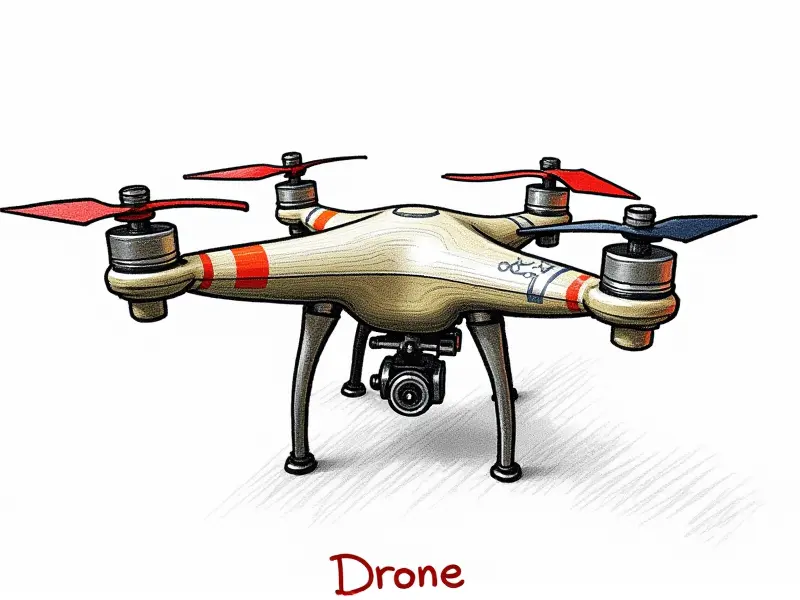Can I race with a DJI Mavic Air?

Is DJI Mavic Air Suitable for Racing?
The DJI Mavic Air is a popular consumer drone known for its compact size, advanced features, and ease of use. However, when it comes to racing drones, the question arises: Is the DJI Mavic Air suitable for competitive FPV (First Person View) racing? This article delves into whether this versatile drone can handle the demands of high-speed aerial races.
Can You Race with DJI Mavic Air?
Racing drones are specifically designed to meet the rigorous requirements of FPV competitions, including speed, agility, and maneuverability. The DJI Mavic Air is a consumer-grade drone that offers impressive features such as obstacle avoidance, 4K video recording, and advanced flight modes. However, these attributes do not necessarily translate into racing capabilities.
DJI Mavic Air: A Good Choice for Racing?
While the DJI Mavic Air is an excellent choice for casual flying and photography, its design and performance characteristics may fall short when compared to dedicated racing drones. The primary considerations include speed, battery life, and aerodynamic efficiency—all critical factors in FPV racing.
Speed
The maximum flight speed of the DJI Mavic Air is around 42 mph (68 km/h), which is relatively slow compared to specialized racing drones that can reach speeds exceeding 100 mph. This significant difference in top speed means the Mavic Air would struggle to compete with other race drones.
Battery Life
The DJI Mavic Air has a battery life of approximately 21 minutes, which is commendable for its size and features. However, racing drones are optimized for shorter bursts of high-intensity flight, often lasting only a few minutes but with much higher speeds.
Aerodynamic Efficiency
Racing drones are engineered to be lightweight and aerodynamically efficient, allowing them to achieve maximum speed and agility. The Mavic Air, while compact, is not designed for the extreme maneuverability required in FPV racing.
FPV Racing with DJI Mavic Air: Reality Check
The reality of using a DJI Mavic Air for FPV racing involves several limitations that make it less suitable compared to dedicated race drones. The drone’s size, weight, and aerodynamic profile are not optimized for the high-speed demands of competitive flying.
Size and Weight
- The Mavic Air is larger and heavier than most racing drones, which can affect its agility and responsiveness during races.
Aerodynamics
Racing drones are built with aerodynamic efficiency in mind to minimize drag and maximize speed. The Mavic Air’s design does not prioritize these aspects, making it less competitive in high-speed scenarios.
DJI Mavic Air vs. Racing Drones
When comparing the DJI Mavic Air to racing drones like the Runcam Swift Pro or TBS Discovery, several key differences become apparent:
Speed and Agility
- Racing drones are designed for high-speed maneuverability, whereas the Mavic Air is optimized for stability and ease of use.
Battery Life vs. Flight Time
- Racing drones typically have shorter flight times but can sustain higher speeds, making them better suited for competitive racing scenarios.
Is DJI Mavic Air Fit for FPV Racing?
The DJI Mavic Air is not inherently designed to meet the specific demands of FPV racing. While it offers a range of features that make it an excellent choice for casual flying and photography, its performance in terms of speed, agility, and aerodynamics falls short when compared to dedicated race drones.
Can DJI Mavic Air Handle FPV Racing?
The answer is largely no. The DJI Mavic Air’s design and capabilities do not align with the requirements of high-speed aerial racing. Its slower speed, heavier weight, and less aerodynamic profile make it unsuitable for competitive races.
DJI Mavic Air in FPV Races: Pros & Cons
While the DJI Mavic Air has several advantages as a consumer drone, its suitability for FPV racing is limited. Here’s a breakdown of the pros and cons:
Pros
- Compact Size: The Mavic Air is easy to transport and store.
- Advanced Features: It offers obstacle avoidance, 4K video recording, and advanced flight modes.
- User-Friendly: Its ease of use makes it accessible for beginners.
Cons
- Limited Speed: The Mavic Air’s maximum speed is significantly lower than that of racing drones.
- Battery Life: While the battery life is good, it may not be sufficient for sustained high-speed flight.
- Aerodynamics: Its design does not prioritize aerodynamic efficiency necessary for competitive racing.
DJI Mavic Air: A Race Drone Alternative?
The DJI Mavic Air is a versatile and capable drone, but it is not an ideal alternative to dedicated race drones. If you are serious about FPV racing, investing in a specialized racing drone would be more beneficial.
Mavic Air in FPV Races: Feasible?
While the DJI Mavic Air can certainly fly and perform well for casual use, its limitations make it less feasible as an option for competitive FPV races. The performance gap between consumer drones like the Mavic Air and racing drones is too significant to bridge.
Is DJI Mavic Air Capable of Racing?
In conclusion, while the DJI Mavic Air offers a range of impressive features and capabilities, it is not designed or optimized for high-speed FPV racing. Its slower speed, heavier weight, and less aerodynamic profile make it unsuitable for competitive races.

